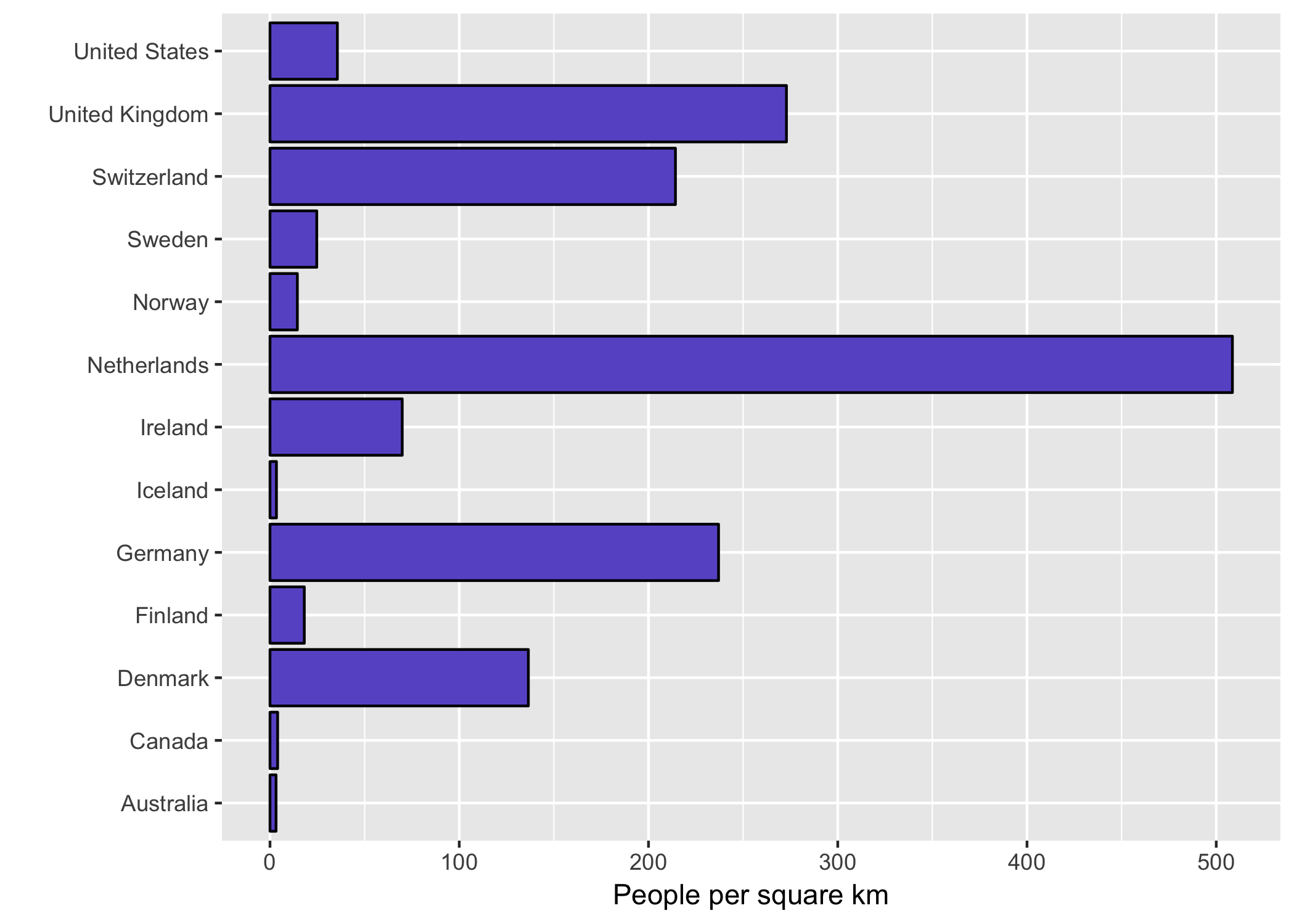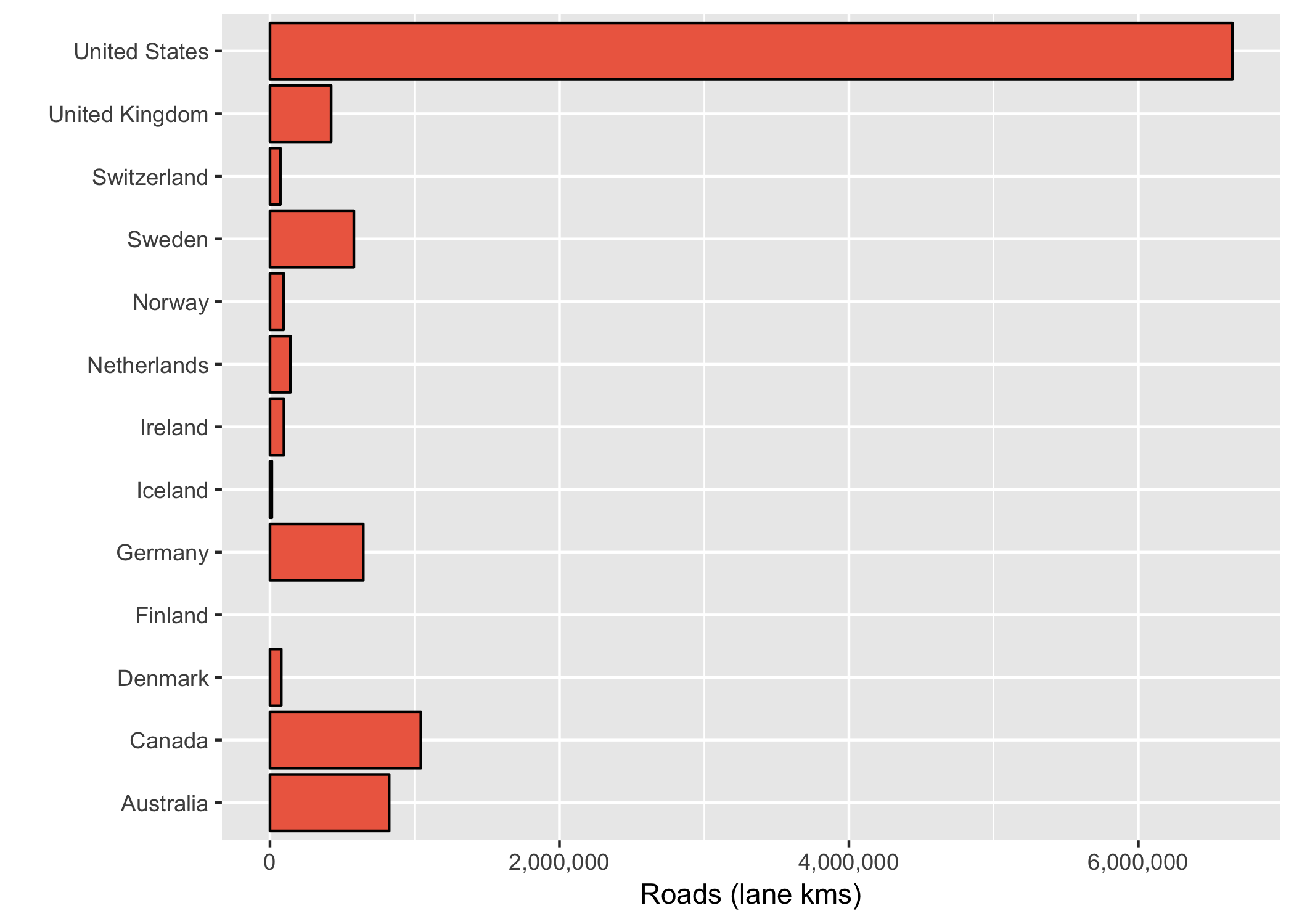‘The US and transit investment’
I just read an article in Vox about the United States’ (lack of) investment in transit. This is a conversation I’ve had with many so I had a quick response. I’m a transit user and a transit lover. Really. I’m also a realist. The author tried to debunk the argument that the United States is too spread out for effective transit by looking to Canadian metro areas for comparison. It’s not the cleanest defense; Canada’s major metro areas are a must bigger portion of that nation’s population than the United States’ are, which leaves many, many US residents owning cars and driving to and between cities for regular or semi-frequent commutes and trips.
So why has the US invested less in transit?
Let’s compare the US to the rest of the world’s highly developed nations. I’m leaving Singapore out given its position as a city-state and Hong Kong for the same / similar reasons. The data comes from the United Nations and I had to do a little manual (in the .csv) cleaning first.
hdi = read.csv("./hdi_cleaned.csv")
hdi = hdi[order(hdi$HDI.Rank..2017.),]
hdi = head(hdi,15)
names(hdi) = c("country", "hdi")
hdi = hdi[-c(9), ] # Remove Singapore
hdi = hdi[-c(7), ] # Remove Hong Kong
hdi$country = trimws(hdi$country)
First, the US has got a lot of land and the population has spread itself across much of that space. Data comes from the World Bank.
density = read.csv("/Users/chriseshleman/Dropbox/pages/chriseshleman.github.io/_drafts/US-and-transit/API_EN.POP.DNST_DS2_en_csv_v2_10135655/Land_cleaned.csv")
density = data.frame(density$Year, density$X2017); names(density) = c("country", "pop_per_km")
density = density[order(-density$pop_per_km),]
head(density,10)
## country pop_per_km
## 145 Macao SAR, China 20546.766
## 148 Monaco 19347.500
## 207 Singapore 7915.731
## 95 Hong Kong SAR, China 7039.714
## 83 Gibraltar 3457.100
## 21 Bahrain 1935.907
## 151 Maldives 1454.433
## 158 Malta 1454.037
## 26 Bermuda 1308.820
## 19 Bangladesh 1265.036
density$country = trimws(density$country)
dat = merge(density, hdi, by="country", all.y=T)
That’s a lot of space over which to lay railroad track, which is expensive. See?

Germany, Denmark, Holland, England … they’re all naturally positioned for densite, capital-heavy, cost-effective (well-used) transport infrastructure to help people get around.
Second, because US residents are spread across so much land, and because the auto industry is such a strong political interest group, and because of national interests related to road congestion, safety and national security, historic investments in the highway network and local roadway systems have a legacy influence. The data here comes straight from Wikipedia, which corraled data points from a number of sources.
roads = read.csv("/Users/chriseshleman/Dropbox/pages/chriseshleman.github.io/_drafts/US-and-transit/road_network.csv")
roads = data.frame(trimws(roads$Country), roads$Road.length..km.)
names(roads) = c("country", "road_km")
roads$road_km = as.numeric(gsub(",","",roads$road_km))
## Warning: NAs introduced by coercion
roads$country = trimws(roads$country)
dat = merge(dat, roads, by="country", all.x=T)
The persistence of a strong financial incentive for home ownership has added to this situation by turning highways into, in part, a collection of shared driveways.

I love trains, be they subways or intercity Amtrak lines. But at this point it would make little policy or economic sense to start laying track everywhere when buses that use new technology for efficiency improvements could, with a few exceptions (New York, for example) do so much more with fewer dollars. The savings could help accomplish more elsewhere.
